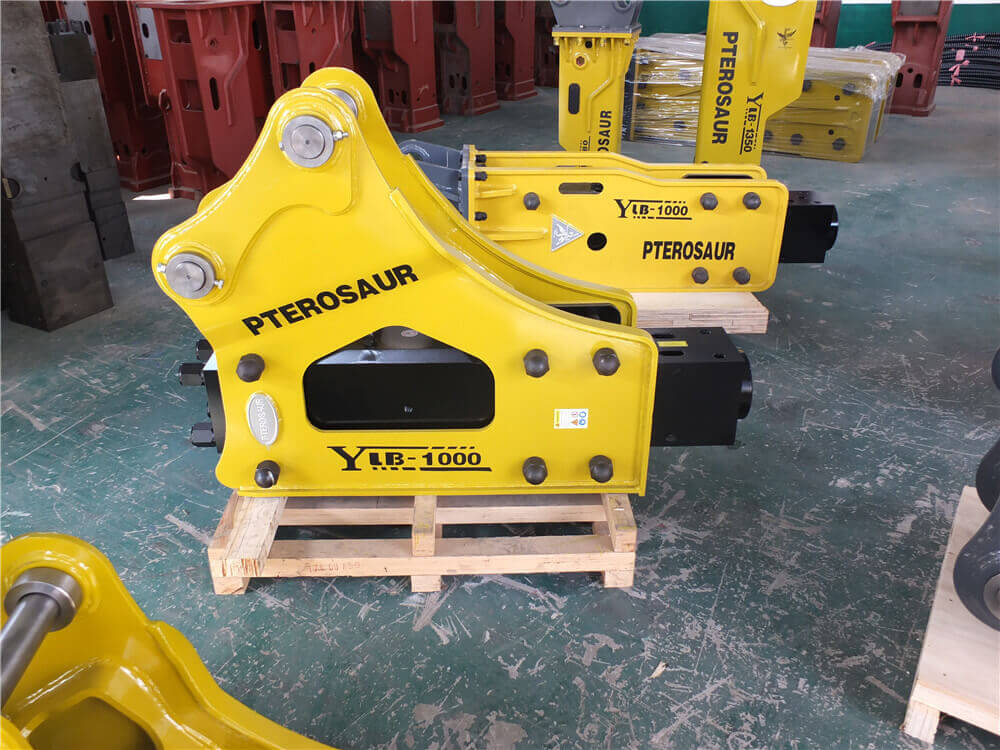The Power of Hydraulic Excavator Breakers: A Comprehensive Overview
Hydraulic excavator breakers, commonly referred to as jack hammers, have revolutionized the construction and demolition industries by providing powerful and efficient solutions for breaking tough materials. This article explores the key features, benefits, and considerations for selecting the right hydraulic breaker for your excavator.
What is a Hydraulic Excavator Breaker?
A hydraulic breaker is a powerful percussion hammer attached to an excavator. It is specifically designed to demolish hard structures such as rock or concrete. The hydraulic breaker operates using an auxiliary hydraulic system from the excavator, which is equipped with a foot-operated valve, allowing operators to control the hammer’s action effectively.
Key Features of Hydraulic Breakers
-
High Efficiency and Performance: Hydraulic breakers are engineered to deliver high striking power while maintaining low noise and vibration levels. This combination enhances the operational efficiency of the excavator, making it suitable for various applications, including demolition, trenching, rock excavation, and mining.
-
Versatility: These breakers can be fitted to a wide range of carriers, including wheeled and tracked excavators, making them adaptable for different job sites. The ability to convert an excavator into a multi-functional tool is a significant advantage for construction projects.
-
Durability and Design: Manufacturers such as Volvo and Komatsu have designed their hydraulic breakers to work in harmony with their respective excavators. This integration ensures consistent power and performance with each strike, contributing to prolonged equipment life and reduced maintenance needs.
-
Lightweight Options: Hydraulic breakers are available in various sizes and weights, catering to excavators ranging from 0.7 to over 140 tons. This diversity allows contractors to choose the best breaker for their specific machines and project requirements.
Choosing the Right Hydraulic Breaker
Selecting the appropriate hydraulic breaker involves several considerations:
-
Excavator Weight Class: The breaker must be compatible with the weight and power of the excavator. For instance, lighter breakers are suitable for mini-excavators, while larger models are designed for heavier machinery.
-
Hydraulic Flow Requirements: Each hydraulic breaker has specific hydraulic flow and pressure requirements. It’s essential to ensure that the excavator’s hydraulic system can meet these demands.
-
Chisel Diameter: The diameter of the chisel affects the type of materials the breaker can handle. A larger chisel diameter is generally better for breaking through more robust materials.
-
Application Needs: Consider the primary applications for which the breaker will be used. Some models are specifically designed for concrete, while others excel at breaking rocks or other hard materials.
Maintenance Tips for Hydraulic Breakers
To ensure optimal performance and longevity of hydraulic breakers, regular maintenance is essential. Here are a few tips:
-
Routine Inspection: Regularly check for wear and tear on the breaker and its components, including the chisel, to identify any necessary repairs before they become major issues.
-
Proper Lubrication: Keeping the hydraulic system well-lubricated helps reduce friction and wear, enhancing the breaker’s performance.
-
Monitor Operating Conditions: Avoid overloading the breaker or using it in unsuitable conditions, as this can lead to premature failure.
-
Follow Manufacturer Guidelines: Each manufacturer provides specific maintenance instructions and operational guidelines tailored to their equipment. Following these recommendations can significantly extend the life of the hydraulic breaker.
Conclusion
Hydraulic excavator breakers are a vital tool in the construction and demolition sectors, offering unmatched efficiency and versatility. By understanding the key features, selecting the right model, and adhering to maintenance practices, contractors can maximize the potential of their hydraulic breakers, ensuring they complete projects safely and effectively. Whether you’re breaking concrete in a busy urban area or tackling tough rock in a remote location, the right hydraulic breaker can make all the difference.



































